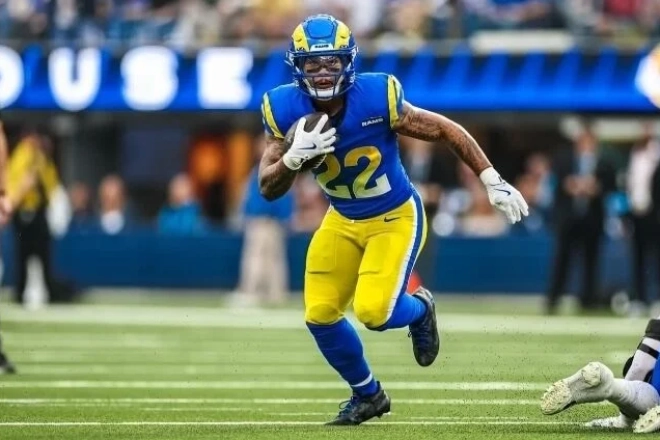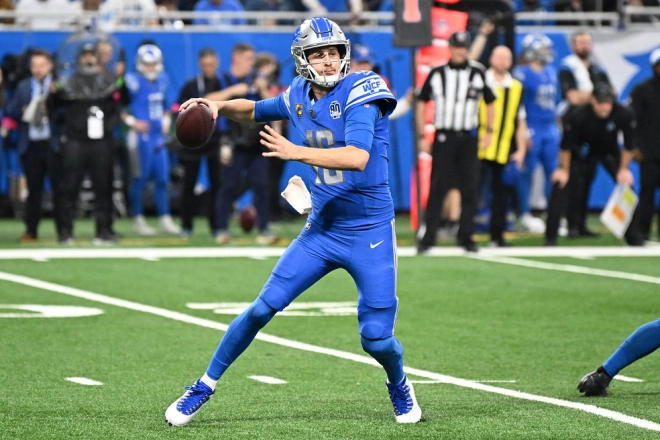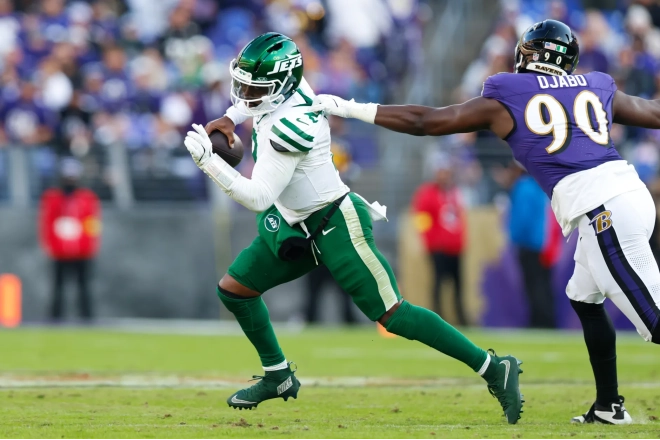Trading picks and players is one of the most exciting—and sometimes complex—aspects of managing a dynasty fantasy football squad. In dynasty leagues, where managers keep their rosters year-to-year, trading becomes a pivotal tool for building long-term success, staying competitive, and reshaping a roster. Whether you want to add immediate contributors, stockpile assets for future years, or execute a win-now strategy, mastering the art of trades is crucial in a dynasty format.
This article will explore Dynasty Fantasy Football's most effective trading strategies, focusing on trading picks and players. We’ll cover the importance of trading in dynasty leagues, offer tips for evaluating players and picks, and delve into key strategies to help you succeed in trades. Whether you're a seasoned fantasy veteran or a newcomer looking to dominate your league, understanding how to approach trading in dynasty formats is essential for sustained success.
The Basics
In dynasty leagues, every player and draft pick has a longer-term value than in redraft formats, which focus primarily on the upcoming season. Understanding this key difference is essential when making trades.
Trading Picks: Dynasty leagues allow you to trade future draft picks, which makes them one of your most valuable assets. Picks in upcoming drafts (often in 1st, 2nd, and 3rd rounds) can be the foundation for a team’s future success. Trading draft picks allows you to either reload on young talent or make moves to acquire a win-now player to boost your title chances.
For more depth and insight into draft pick trading, check out ASL Founder Leonard LaPadula's article here: How To Win Your Dynasty League.
Trading Players: Player trades in dynasty leagues can be used to move veterans for younger, higher-upside players or to acquire win-now pieces when contending. Whether you’re offloading older players nearing the end or acquiring an emerging star, player trades are essential to fine-tuning your roster each season.
The right trade can transform a dynasty team, just as a poor trade can set your squad back for years.
Types of Trades
In dynasty leagues, various types of trades help teams meet their goals. Understanding each type of trade and when to use it is key to long-term success.
1. Draft Picks For Players:
In dynasty leagues, this type of trade involves trading away future draft picks for current players. The rationale behind this is typically to acquire a veteran player who can contribute immediately. Teams in contention often make this move to bolster their rosters with proven talent, while rebuilding teams might hesitate, preferring to keep draft picks for the future.
Example: In one of my Superflex leagues, I needed quarterback help. I approached the owner of Vikings quarterback Sam Darnold, and we were able to make a trade in which I dealt my 2027 first-round pick straight up for Darnold. I was willing to make this move not only because I needed help at the position but also because Darnold was having a good year and I had multiple opportunities to re-acquire the pick before 2027, thus essentially acquiring Darnold for nothing.
2. Player For Player:
This type of trade occurs when teams swap players in a direct deal. Dynasty managers often use this method to address specific roster needs, moving players with similar long-term value but different skill sets.
Example: In one of my leagues, I traded away Giants RB Tyrone Tracy, and in return received Bucs RB Bucky Irving along with Rams WR Jordan Whittington. At the time, I was looking to upgrade my RB corps, and even though Tracy had played well, Irving was just beginning to make his mark but hadn't yet had a breakout game. It was a perfect storm of being able to buy low, and now I've secured myself a possible RB1 for both the short and long term.
3. Picks For Picks:
In dynasty formats, this trade typically involves moving up or down in the draft to either secure a player you want or to stockpile more picks for future drafts. It’s a strategy often employed by managers who want to target a specific player, or those looking to rebuild with multiple young assets.
Example: In one of my leagues, I traded away my 5.12 pick in 2025 for a 2026 5th. The manager who received the 5.12 from me was happy to take it on, as he now has at least one pick in the 2025 rookie draft. For me, by dealing away the 5.12 specifically for a random 2026 5th, I've essentially increased my odds of obtaining a better player a year later.
4. Player For Picks:
This type of trade is often used by teams in rebuild mode looking to acquire future draft capital. A rebuilding team may decide to trade away veterans or players with declining value in exchange for valuable future picks.
Example: I dealt away Rams WR Jordan Whittington shortly after acquiring him for a 2026 4th-round pick. Not only was Whittington not doing much at the time of the deal, but my team wasn't going anywhere in the standings and I wanted to increase the number of draft picks on my team.
Effective Trading Strategies
To succeed in dynasty leagues, you need to develop a few key trading strategies. The dynamic nature of dynasty leagues means you have to be adaptable, and these strategies will help ensure you make the most of your trades.
1. Understand Value and Prioritize Long-Term Thinking
In dynasty, long-term value is VITALLY more important than short-term gain. The idea behind playing in a dynasty league is exactly like it sounds, have a dynasty. The best method of being able to both build and maintain a roster over multiple years necessitates a long-term mindset with incredible patience. Additionally, a player’s age, injury history, and upside in the coming years all play a major role in their trade value.
Young Talent is Key: When trading, younger players with high potential are always more valuable in the long term. For example, a player like Cardinal's WR Marvin Harrison Jr. is a highly sought-after asset because he is young, productive, and has a lot of room to grow.
Age is a Factor: Older players may offer immediate value, but they have a finite shelf life. In dynasty leagues, trading away older players who are no longer at their peak can help secure future assets or younger talent that has the potential to outlast them. It's often essential to make these types of moves whenever you can. For example, moving a still productive but aging wide receiver like Jet's WR DaVante Adams for a younger player or future picks can help a rebuilding team. In situations like this, it's best to try to capitalize on the name value in an attempt to extract as much of a return as possible.
Injury Concerns Matter: A player with a recurring injury history may have a lower trade value, especially if the player is older. Be wary of trading for or holding onto players whose injury history could limit their long-term potential.
Know When to Buy Low and Sell High
One of the most powerful strategies in dynasty leagues is knowing when to buy low on players who are undervalued and sell high on players who are peaking in value. This is one of the most underappreciated yet important skills to learn when it comes to being successful in this format.
Buy Low on Young Players: If you see a player struggling in their first year or two, but you believe in their talent and potential, it can be a great time to acquire them at a discounted rate. A player like Jets RB Braelon Allen or Bucs WR Jalen McMillan may have moments of inconsistency, but their long-term upside could be substantial. This is especially relevant when it comes to acquiring 2nd & 3rd year running backs, as that position tends to be the most volatile and typically sees a lot of turnover every year while simultaneously providing an opportunity for the player to boom.
Sell High on Veterans: If a player is coming off a career season or a peak in performance, it could be a great time to trade them away. You might be able to get premium value for players like Vikings QB Sam Darnold or Packers RB Josh Jacobs, who may not be able to sustain that level of production for long.
Balance Immediate Contention and Long-Term Rebuilding
Dynasty teams often fall into two categories: contenders and rebuilders. Understanding where your team falls on this spectrum is vital when making trades. That said, many times this isn't necessarily cut and dry, as most teams will fall somewhere in the middle of the spectrum. Therefore, it is vital to look at things from a long-term perspective and try to put your team in a solid position for both now and the long term whenever possible.
Contending Teams: If your team is in “win-now” mode, trading away future draft picks for immediate help can be a solid strategy. In this scenario, adding veterans guaranteed to perform in the short term (players like Jets WR Davante Adams or Dolphins WR Tyreek Hill) can push your team over the top. The trick here is to try to not give up too much to acquire such players, as their shelf life could be very short, thereby potentially handicapping your team long-term. Another reason why you want to be careful to not give up too much future value in acquiring "win-now" players is that while it may increase your chances of making your league's playoffs, stats show that most teams who get in only have about a 25% chance of winning the championship. This supports the notion that you should try to be cognizant of how much future value you are giving up in any deal. Balance is key.
Rebuilding Teams: For teams in rebuild mode, trading away veterans for future picks or young prospects is the preferred strategy. A manager looking to rebuild might trade away an aging quarterback like Rams QB Matthew Stafford or a declining running back like Houston's Joe Mixon in exchange for picks and younger players with higher upside. Once again, however, balance is key, as while you want to try to extract as much value from these players as possible, you don't want to be in a place where you trade away a player at a position of need just to trade them away, nor do you want to be caught holding the bag when their career is over. If you're going to trade away a vet, it's best to heed the words of famous coach Bill Belichick, who stated, "It's better to trade a player too early than too late." This mantra works quite well in dynasty formats, and owners would be wise to learn and implement this principle as soon as possible.
Timing and Patience
When you’re dealing with trades in dynasty leagues, timing can be everything. Sometimes waiting for the right moment to make a move can lead to better deals, while rushing into a trade could cost you valuable assets. Patience and realizing that dynasty has a cycle of when players and picks are at their highest value is also crucial, as it provides you with an idea of when you can try to squeeze the most value onto your roster as possible.
Pre-Draft Trades: Before the rookie draft, you may find opportunities to trade future picks for current talent, or move down in the draft to acquire multiple picks. The pre-draft season is often a time when managers are actively looking to make deals. This is also the time of the year when your draft picks are at their highest value, thereby increasing the odds of you being able to trade them for help in areas of need or future picks.
In-Season Trades: During the season, you can use trades to address immediate needs, such as replacing an injured player. However, patience is important as injuries or surprising performances can increase or decrease player value. The key here however is to continue thinking with a long-term mindset, as many variables can happen during a short 14-game fantasy season that is out of your control. With any in-season trade, it is crucial to attempt to strike a balance between right now and sacrificing some of your future while not giving up too much.
Trade Deadlines: Most dynasty leagues have trade deadlines or specific windows for trades. These deadlines can be pivotal in securing players for a playoff push or positioning yourself for the long term. Timing is big here, as by the time most trade deadlines roll around, you should have an idea of whether or not your team is a contender or rebuilder. Plan and trade accordingly.
Use Trade Calculators and Analytics
In dynasty leagues, player values fluctuate constantly, and using resources like trade calculators or fantasy football analytics websites can give you an edge in evaluating the fairness of trade. These tools can help assess the relative value of draft picks and players, ensuring that you’re making data-driven decisions. That said, most calculators are based on different site metrics and opinions, and many of those opinions can be wrong. If you can, many times it's best to look at more than one calculator, thereby increasing your odds of having a more balanced viewpoint of a player's value. Also, it's important to remember that just because your calculator has a player valued a certain way does not necessarily mean your trade partner values the same player the same way. Many times it's best to look at the calculator your trading partner uses to come to a consensus.
Trading picks and players is a cornerstone of dynasty fantasy football. By understanding the value of players and picks, timing your trades effectively, and balancing your team’s short- and long-term goals, you can navigate the trade market to build a competitive roster year after year. Whether you’re focused on immediate championship contention or strategically rebuilding, effective trading is key to success in dynasty leagues. With these strategies in mind, you’ll be well-equipped to dominate your league for years to come.





